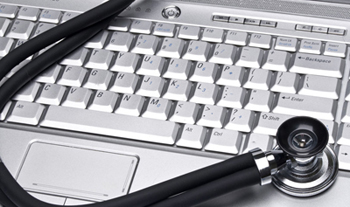 Digitization of patient records offers the benefit of better accessibility to the health record and for tracking patient outcomes, which would improve the quality of care. However, physicians are finding it difficult to enter patient information into the electronic health record (EHR) system. They are unable to give their patients the attention they need as they are more focused on documenting the encounter. Moreover, EMR increases physician workload as they have to spend extra time on typing.
Digitization of patient records offers the benefit of better accessibility to the health record and for tracking patient outcomes, which would improve the quality of care. However, physicians are finding it difficult to enter patient information into the electronic health record (EHR) system. They are unable to give their patients the attention they need as they are more focused on documenting the encounter. Moreover, EMR increases physician workload as they have to spend extra time on typing.
Despite these drawbacks, many physicians rate the feature that allows them to dictate the patient narrative directly into the EMR as its best feature. There is now an innovative way to blend the benefits of the structured templates of EMR with the physician’s need to ensure detailed documentation – partial dictation.
This blended solution is making a marked improvement in the overall functioning of health care practices. Within the EMR’s structured note, the physician can press a button on the keyboard and perform dictation at select spots for explaining complex or odd details. The partial dictation segments which are referred to as short ‘snippets’ or ‘slices’ of dictation gets transcribed and returns automatically to specific locations within the electronic record. The HL7 process with partial dictation is structured so that the EMR sends the audio and text files to the medical transcription service provider’s platform for editing and processing.
This partial dictation system that allows EMR integration with medical transcription offers many benefits of which the most important is error-free documentation. The speech recognition technology of the EMR system has many issues such as difficulty in interpreting speech patterns and identifying grammar mistakes and homophones. Moreover, if the physician makes a mistake while dictating, the software cannot identify the error. All these issues are resolved when the audio files reach the hands of the medical transcription company.
The company’s team of professionally trained and experienced transcriptionists and speech recognition technology editors can ensure informed edits by correcting the errors in the audio files and filling in any gaps. The partial dictation solutions offered by experienced medical transcription firms are helping health care providers:
- Ensure error-free documentation
- Reduce costs
- Improve care
- Increase productivity and revenue
- Minimize risks
This approach allows physicians to utilize EHR templates for documenting some sections while using dictation for certain other sections, in other words, to get the best of both worlds.


